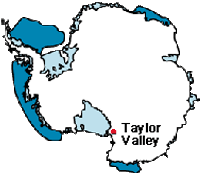
The latest expeditions to ice caps in the high, tropical Peruvian Andes Mountains by Ohio State University scientists may shed light on a mysterious global climate change they believe occurred more than 5,000 years ago.
They hope that ice cores retrieved from two tropical ice caps there, as well as ancient plants retrieved from beneath the retreating glaciers, may contain clues that could link ancient events that changed daily life in South America, Europe and Asia.
Something happ
Using naturally occurring patterns of stable-isotopes created by weather and plants, Jason Duxbury of the University of Alberta and his colleagues are tracking the migration routes of birds of prey. Their work on the summer origins of migrating and wintering Peregrine Falcons and Burrowing Owls has shed new light on what has previously been the secret, non-breeding half of the birds’ lives.
By analyzing stable isotopes of hydrogen, carbon, and nitrogen in bird feathers, Duxbury has bee
Work recently published in Nature announces a significant correlation between sediment deposition in two Bolivian rivers, which flow into one of the principal tributaries of the Amazon, and climatic events of the ENSO (El Niño Southern Oscillation) type. It is the fruit of a research partnership between the IRD, the Bolivian Meteorology and Hydrology Centre in La Paz and scientists from the universities of Washington and California. The results represent a major advance in the study of the Amazon Bas

Researchers here have discovered that a reddish deposit seeping out from the face of a glacier in Antarcticas remote Taylor Valley is probably the last remnant of an ancient salt-water lake. The lake probably formed as much as 5 million years ago when the sea levels were higher and the ocean reached far inland.
Ohio State University scientists reported their conclusions today at the annual meeting of the Geological Society of America in Se
From a newly discovered, and armored, amphibian to new tools for understanding volcanoes, to dating hillside erosion, geologists from the University of Cincinnati’s McMicken College of Arts & Sciences fill the agenda at the upcoming Geological Society of America (GSA) annual meeting Nov. 2-5.
UC geologists will present 27 papers and posters among the 170 symposia and other sessions scheduled at the conference. More than 6,000 geoscientists will gather for “Geoscience Horizons,” the 115th
Sometimes the most extreme environment for life isn’t at the bottom of the ocean or inside a volcano. It’s just south of Chicago.
Illinois groundwater scientists have found microbial communities thriving in the slag dumps of the Lake Calumet region of southeast Chicago where the water can reach extraordinary alkalinity of pH 12.8. That’s comparable to caustic soda and floor strippers — far beyond known naturally occurring alkaline environments.
The closest known relatives